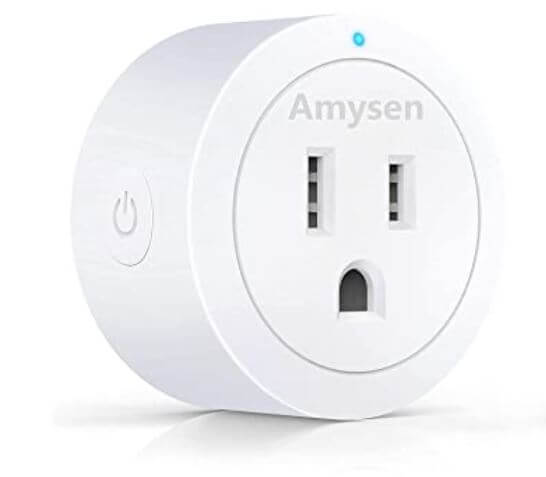It’s our annual holiday gift giving guide to smart home technology! With these gifts, the tech-loving recipient gets a fun gadget plus energy savings for the home. Many of these devices will be on sale during Black Friday, so check online for current pricing and deals!
Smart Home Hub
At the heart of most smart homes is a hub. Before exploring other technology, start with this “home base” by choosing one of three paths: Amazon Alexa, Google Home or Apple Homekit. By establishing this first, you’ll then build on home automation that works together. There are multiple third party devices that you can purchase that work with these smart home ecosystems.
Connect your home hub to a number of supported smart gadgets and control your thermostat or light bulbs with the power of your voice. Add smart plugs and you can control your home electronics, lights and other devices from anywhere.
You can also program home hubs to run “routines” around your home, a set of pre-programmed actions that will activate at a pre-set time, or when you say a particular phrase. For example, a nighttime routine might turn down the thermostat to take advantage of your free nights electricity plan, lock all the doors, and turn off the exterior and interior lights.
The Amazon Echo is our favorite choice, such as the Echo Dot or the Echo Show with display screen. We’ve linked these below.
Searching for compatible devices? Look for the Matter logo. Matter is a smart home interoperability protocol that lets devices communicate across various platforms, including Amazon, Apple and Google. This makes it easy to add new devices without having to confirm compatibility specs.
Smart Thermostats
If you buy one new energy saving device this year, make it a smart thermostat. These devices learn your temperature preferences and adjust the heating and cooling automatically based on your schedule, occupancy (using geofencing or sensors), and outside weather. Since heating and cooling account for a around 50% of your energy use, this provides significant savings.
Smart thermostats can also be adjusted remotely from an app on your smartphone if you need to make adjustments on the fly. That’s perfect if you regularly forget to adjust the thermostat when you leave home or need to set your thermostat settings for vacation while on the road.
Two of our favorites are the Google Nest smart thermostat and the Amazon Smart Thermostat.
Smart Plugs
Smart plugs can turn any standard appliance into a smart device, allowing you to control it remotely via an app or voice command. They help eliminate “phantom power” or standby power drain by cutting power to devices that aren’t actively in use, like TVs or chargers.
There are multiple brands of smart plugs, and they are quick to install and super affordable, usually under $20. Just plug them in and then plug your device into the smart plug. Use the app to create a list of smart-enabled devices in your home and turn them on and off from your phone. These are great to have if you will be traveling over the holidays, since you can use them to remotely control your lights.

Smart Power Strips
An advanced power strip (APS) functions similarly to smart plugs but for multiple devices at once. They have a primary outlet that can cut power to all other “switched” outlets when the primary device is turned off. For example, you can set a smart power strip to turn off a game console and speakers when the TV is off.

Smart Light Bulbs
You can manage various devices, including lights, with your smart plug or smart power strips, which we talked about above. Or you can get light bulbs with wi-fi and intelligence built in. Once connected to your smart home hub, you can command them to turn on with your voice, from your phone or with a schedule. Some bulbs also include special features like multiple colors or shades of white.
Dusk to Dawn Sensors
Dusk to dawn technology helps ensure you don’t leave your exterior lights on overnight. There are three different ways to use this technology at your home. One approach is to purchase a light fixture with a light sensor included, but that requires wiring skill. Your technology focused options include using a dusk to dawn bulb, or adapting your existing devices with adapters. None of these examples are smart-home tech since they are not wifi enabled, but they make cool small gifts!
Smart Sprinkler Controller
Have a home sprinkler system? Use a smart sprinkler controller like the Rachio 3 which can optimize watering schedules based on local weather forecasts, soil moisture levels, and plant needs. This prevents overwatering, saving water and making your home more conservation focused.

Garage Door Smart Controller
Never have to wonder, “Did I shut the garage door when I left?” Purchase a smart garage door controller for under $50 and control your door remotely, or schedule it to automatically close after a certain amount of time without activity.

Power Station Back-Up
Not a smart home technology, but a smart thing to have in your home. Think charging block on steroids. In the event of a short power outage, you’ll be able to keep your devices charged and a fan or portable heater running with a power bank. Small capacity chargers like the one below start around $399, with home-sized models, including those with portable solar panels, running up to several thousand dollars. View the Jackery line of products online.

For more information on smart home technology, check out Porch.com’s beginner’s guide to smart homes.







